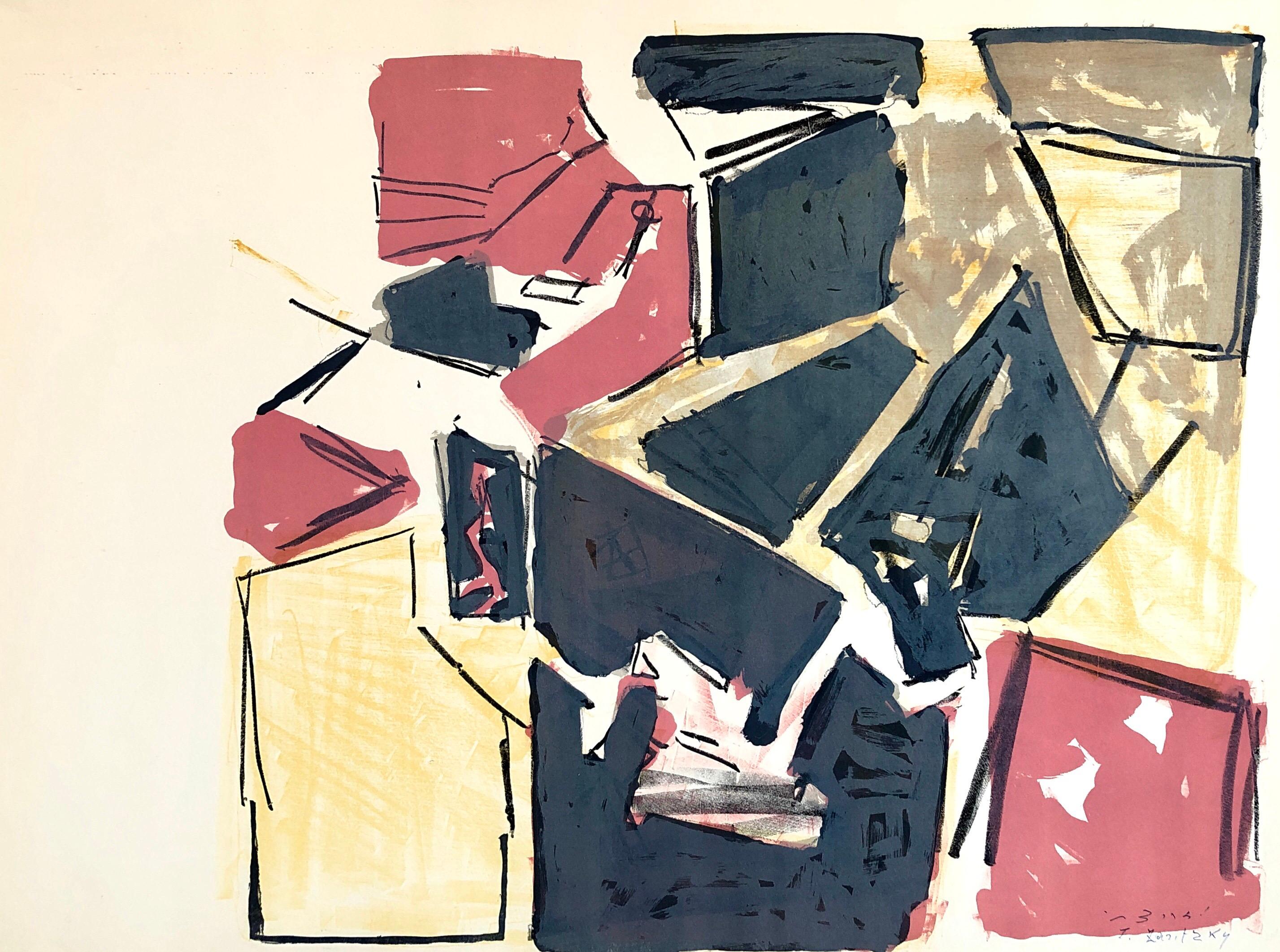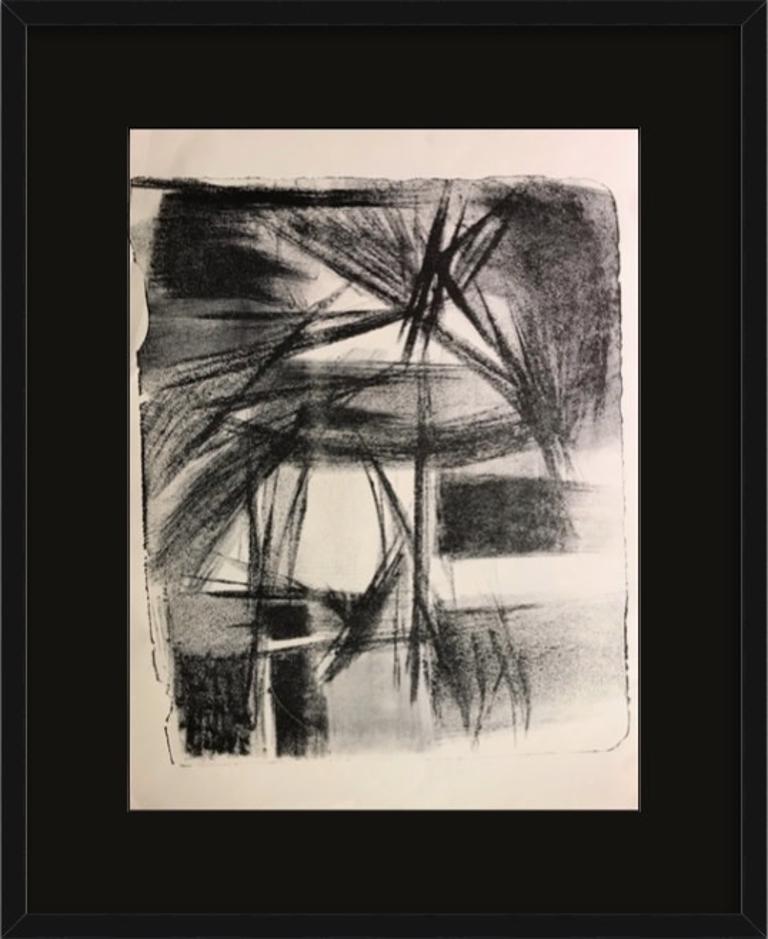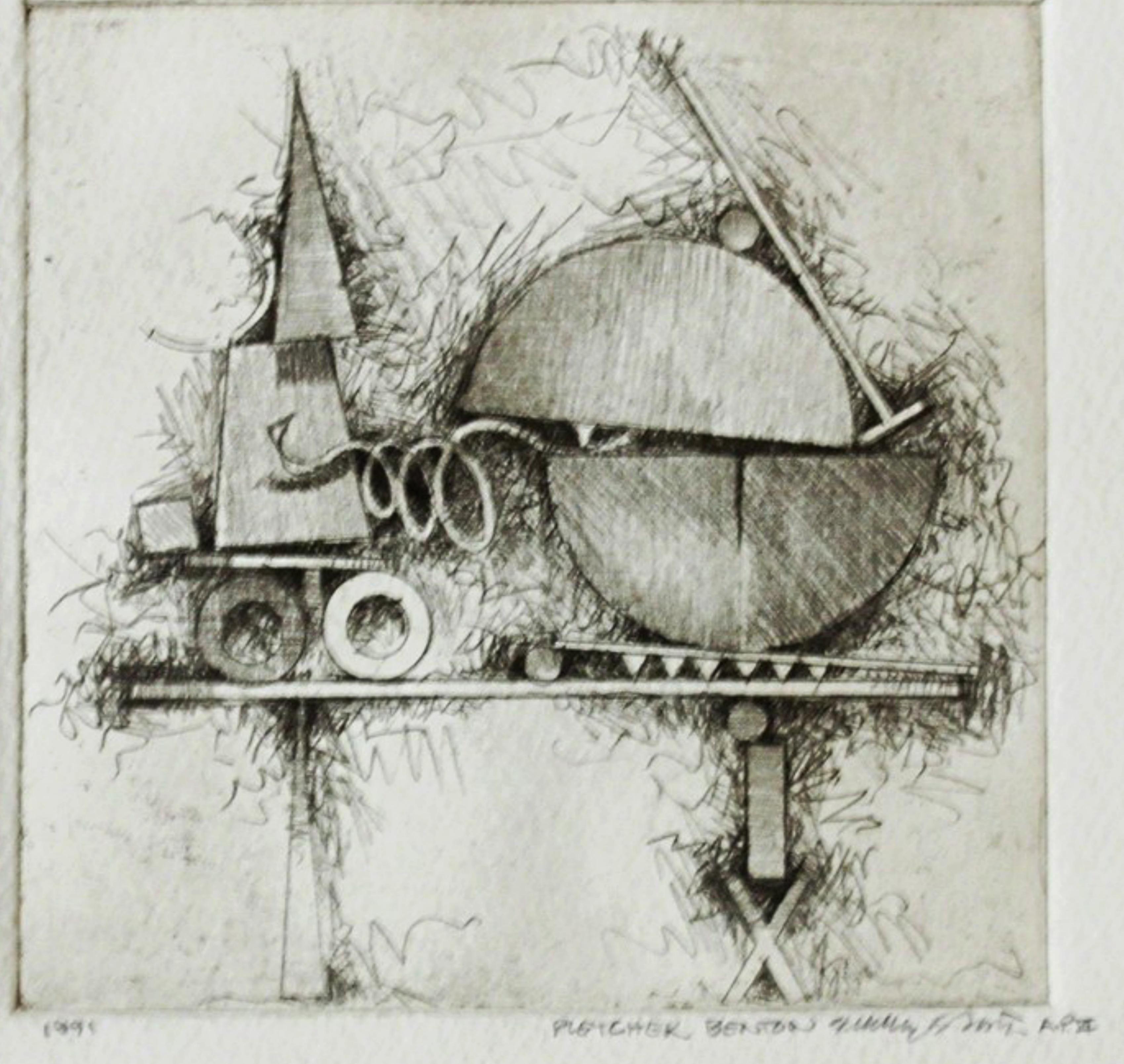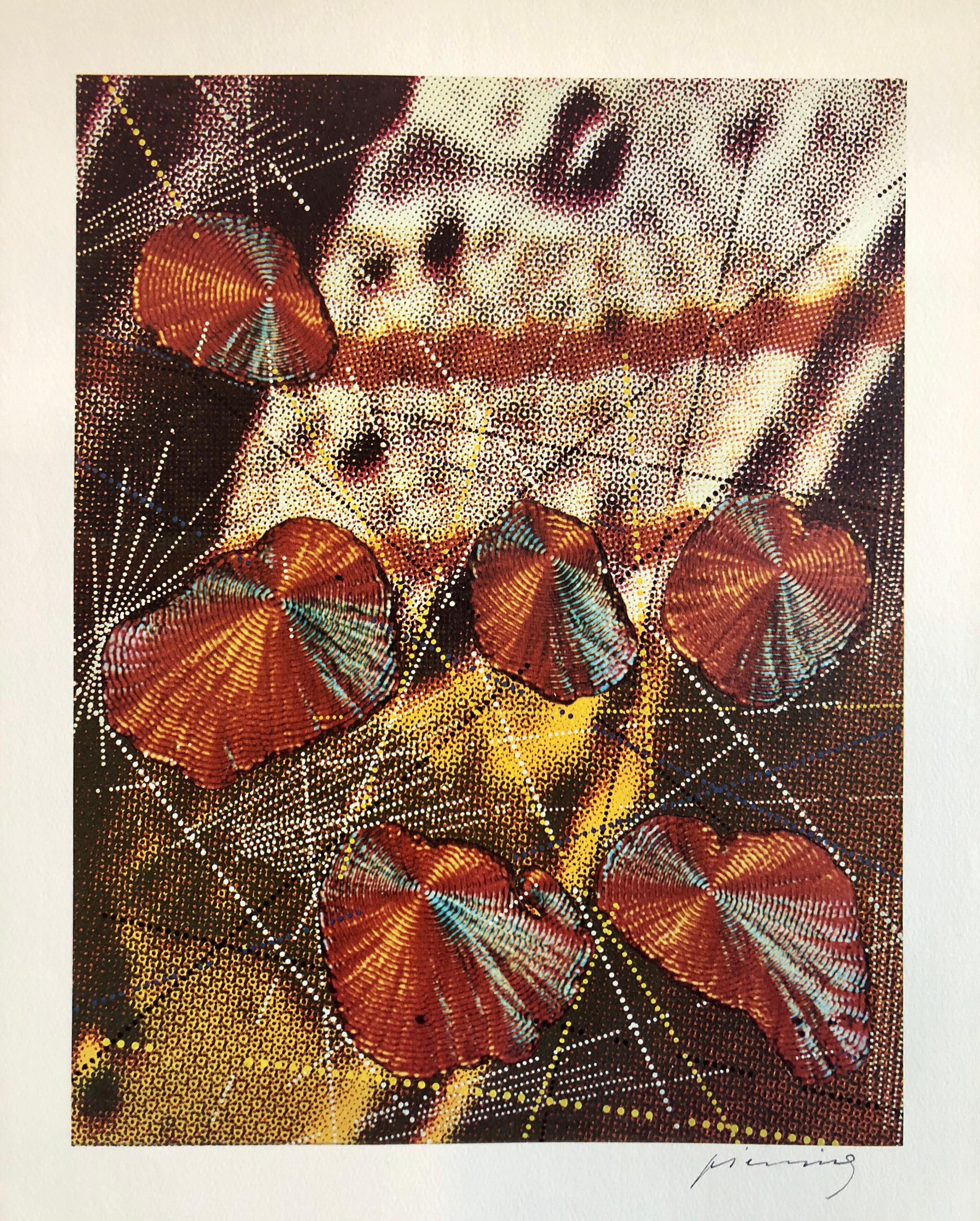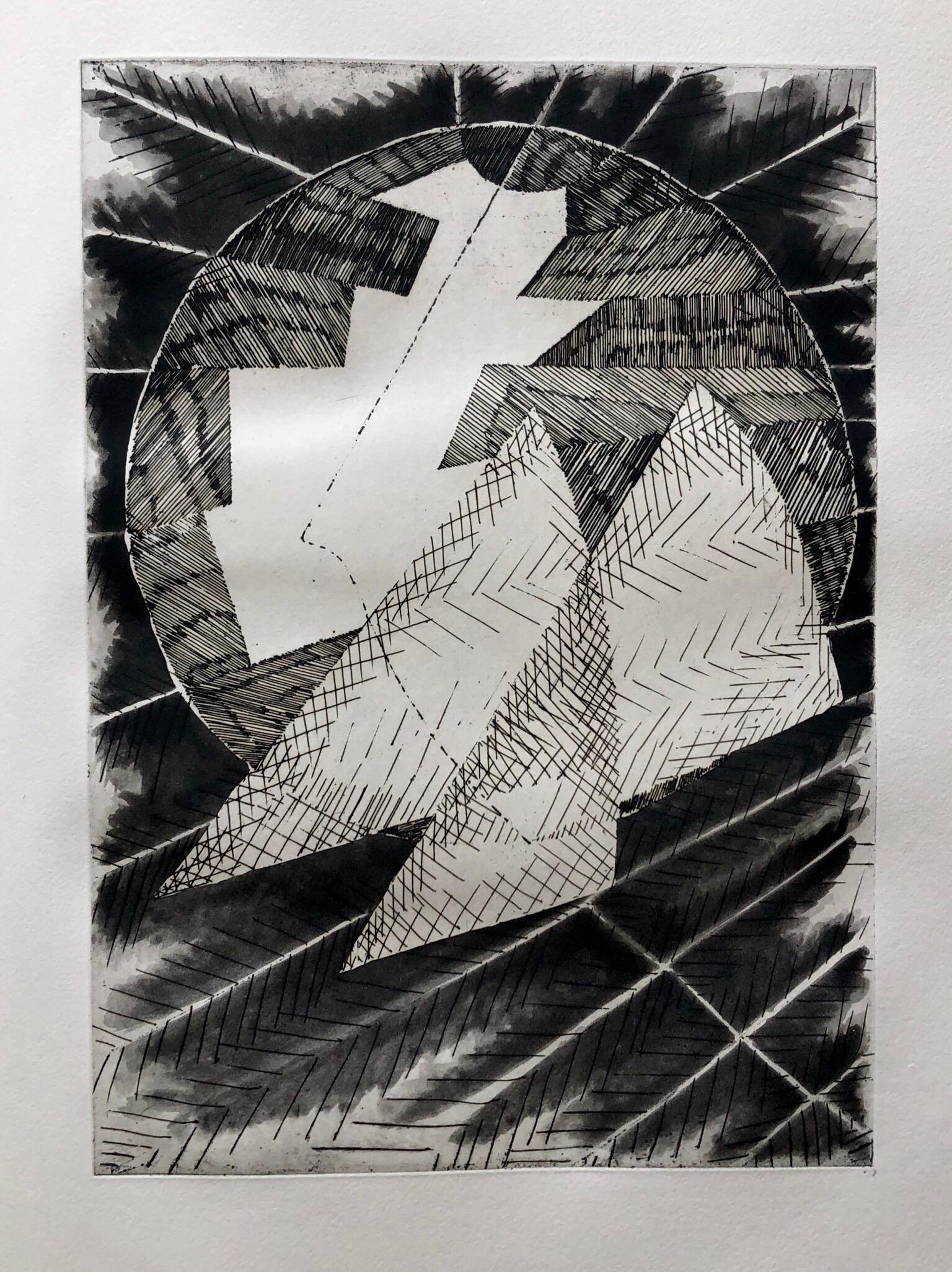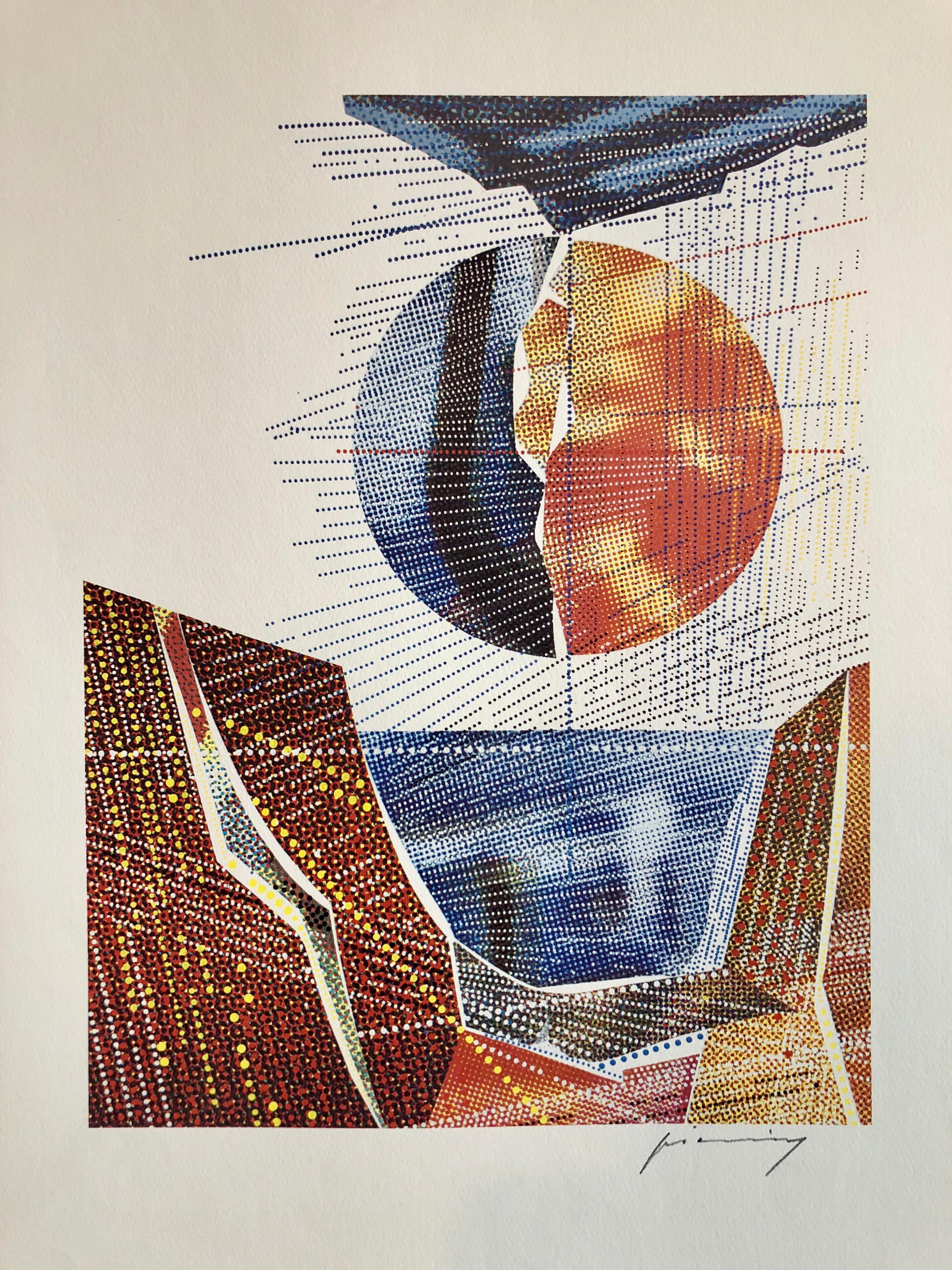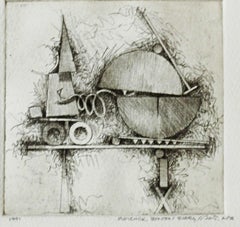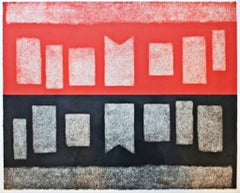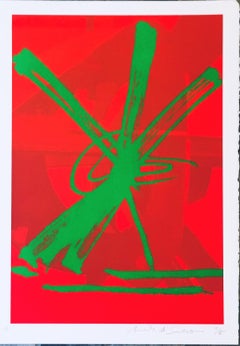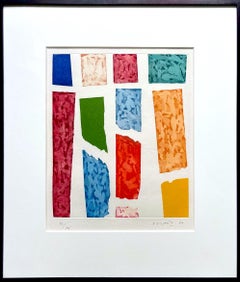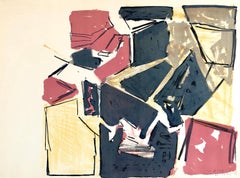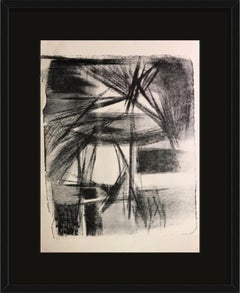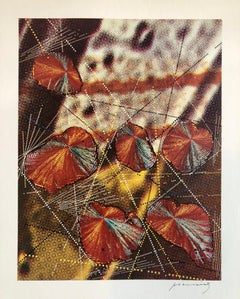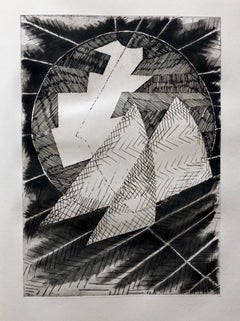Items Similar to Shafts, lithograph, pencil signed/n 11/50 by constructivist sculptor John Henry
Want more images or videos?
Request additional images or videos from the seller
1 of 7
John HenryShafts, lithograph, pencil signed/n 11/50 by constructivist sculptor John Henry1974
1974
$750
£581.40
€658.09
CA$1,073.41
A$1,171.33
CHF 607.99
MX$14,013.96
NOK 7,717.32
SEK 7,228.71
DKK 4,915.74
About the Item
John Henry
Shafts, 1974
Lithograph
23 × 16 inches
Pencil signed, dated and numbered 11/50 on the front; with blind stamp
Unframed
1970s lithograph by constructivist sculptor John Henry.
- Creator:John Henry (1943, American)
- Creation Year:1974
- Dimensions:Height: 23 in (58.42 cm)Width: 16 in (40.64 cm)
- Medium:
- Movement & Style:
- Period:
- Condition:Very good condition; the work was originally framed so there may be some tape residue on the back which will frame out.
- Gallery Location:New York, NY
- Reference Number:1stDibs: LU1745211842092
About the Seller
5.0
Platinum Seller
Premium sellers with a 4.7+ rating and 24-hour response times
Established in 2007
1stDibs seller since 2022
459 sales on 1stDibs
Typical response time: 2 hours
- ShippingRetrieving quote...Shipping from: New York, NY
- Return Policy
More From This Seller
View AllRare constructivist etching by renowned modernist sculptor, Signed AP, Framed
By Fletcher Benton
Located in New York, NY
Fletcher Benton
Etching on wove paper in artist's frame
Signed by the artist with his printed signature in graphite, signed by the artist with his hand signature also in graphite, nu...
Category
1990s Constructivist Abstract Prints
Materials
Etching
Rare Dorothy Dehner Mid century modern sculptural Minimalist lithograph signed/N
By Dorothy Dehner
Located in New York, NY
Dorothy Dehner
Untitled from Lunar Series, 1971
Rare Lithograph on white Arches paper
22 × 27 inches
Pencil signed, dated and numbered; with inscription including unique series numbe...
Category
1970s Abstract Abstract Prints
Materials
Lithograph
Future Shadow II Abstract Expressionist lithograph pencil signed numbered 3/5
By Mark di Suvero
Located in New York, NY
Mark di Suvero
Future Shadow II, ca. 2001
Lithograph on Arches 88 Paper with Deckled Edges
Signed and numbered from an edition of 5 by the artist on the front
32 × 23 inches
Unframed
The work was gifted directly by the artist to the present owner. This is a variation of a print the artist created as a donation to the Venice California...
Category
Early 2000s Abstract Expressionist Abstract Prints
Materials
Lithograph
Geometric Abstraction, Ex-Bank of New York Collection Lithograph SIgned/N Framed
By Piero Dorazio
Located in New York, NY
Piero Dorazio
Abstract Composition (Bank of New York Corporate Collection), 1971
Lithograph on wove paper
Pencil signed, numbered 73/75 and dated on the front. The back bears a label...
Category
1970s Abstract Geometric Abstract Prints
Materials
Lithograph
Kimber Smith, Abstract Expressionist Geometric Abstraction signed/n lithograph
By Kimber Smith
Located in New York, NY
KIMBER SMITH
Untitled Abstract Expressionist Geometric Abstraction, 1967
Lithograph on Rives paper
25 × 19 3/5 inches
Signed in silver...
Category
1960s Abstract Geometric Abstract Prints
Materials
Lithograph
Untitled, from the Lehman Brothers Art Collection unique signed framed monotype
By Andrea Belag
Located in New York, NY
Andrea Belag
Untitled, from the Lehman Brothers Art Collection, 2003
Watercolor monotype on paper
Pencil signed and dated on the front
Framed
Gorgeous ...
Category
Early 2000s Abstract Abstract Drawings and Watercolors
Materials
Watercolor, Monotype, Graphite
You May Also Like
Israeli Josef Zaritsky Abstract Modernist Lithograph Print "Composition"
Located in Surfside, FL
Abstract Composition, 1959 Lithograph
This was from a portfolio which included works by Yosl Bergner, Menashe Kadishman, Yosef Zaritsky, Aharon Kahana, Moshe Tamir and Michael Gross.
Joseph (Yossef) Zaritsky (Hebrew: יוסף זריצקי; September 1, 1891 – November 30, 1985) was one of Israel's greatest artists and one of the early promoters of modern art in the Land of Israel both during the period of the Yishuv (Palestine, the body of Jewish residents in the Land of Israel before the establishment of the State of Israel) and after the establishment of the State. In 1948 Zaritsky was one of the founders of the "Ofakim Hadashim" group. In his works he created a uniquely Israeli style of abstract art, which he sought to promote by means of the group. For this work he was awarded the Israel Prize for painting in 1959.
Joseph Zaritsky...
Category
1950s Modern Abstract Prints
Materials
Lithograph
C.1950s Abstract Mid Century Lithograph
By Jerry Opper
Located in Arp, TX
From the estate of Jerry and Ruth Opper
Abstract Fireworks
1950's
Stone Lithograph on Paper
12.5" x 19", Unframed
Came from a portfolio of his work from his estate.
Jerry Opper (192...
Category
Mid-20th Century Abstract Abstract Prints
Materials
Stone
Pencil Signed Abstract Geometric Graphic Design Lithograph Print, Bauhaus Artist
By M. Peter Piening
Located in Surfside, FL
M. Peter Piening was born on March 14, 1908 in Grabow, Germany. He began his education at a private school in Italy, studied at the Jesuit school of Kloster Ettal in Bavaria, and attended the German Stettin Gymnasium, where he graduated in 1926. Between 1926 and 1928 Piening studied design at the Bauhaus in Dessau, Germany. There he was taught by multiple famous twentieth-century artists, including Joseph Albers, Paul Klee and Mies van der Rohe. After receiving his master’s degree from the Bauhaus in 1929, Piening enrolled at the University of Berlin and obtained his PhD in philosophy in 1931.
Piening spent his early career free-lancing as an illustrator and artist for various publishing companies, eventually settling in Paris to work for Condé-Nast’s French publication of Vogue. In 1934 he moved to the United States to work in Condé-Nast’s New York City office. For the next two decades, Piening worked for many important advertising agencies and magazine publishers, including the N. W. Ayer and J. Walker Thompson agencies and Life and Fortune magazines. As art director for Life in the 1930s and for Fortune in the 1940s, Piening completely redesigned the layout of each magazine. He also redesigned the layouts for thirty-four other major American magazines, including Town & Country and Cosmopolitan.
Through his design work, Piening had a great impact on the American public, although the millions who encountered his work most likely never knew his name. Between 1934 and 1964, Piening designed over sixty logos and trademarks for internationally-known products and companies. His most widely-recognized logo may have been the three interlocking rings of Ballantine beer. Piening’s other trademark designs include the Lincoln Zephyr...
Category
1960s Abstract Geometric Abstract Prints
Materials
Lithograph
French Avant Garde Bold Abstract Geometric Aquatint Etching Op Art Kinetic
By Jean Deyrolle
Located in Surfside, FL
Original etching, aquaforte, aquatint engraving. poetry text by Robert Pinget on facing fold of sheet. The individual sheet is unsigned. The justification page is hand signed by th...
Category
1960s Abstract Geometric Abstract Prints
Materials
Etching, Aquatint
Pencil Signed Abstract Geometric Graphic Design Lithograph Print, Bauhaus Artist
By M. Peter Piening
Located in Surfside, FL
M. Peter Piening was born on March 14, 1908 in Grabow, Germany. He began his education at a private school in Italy, studied at the Jesuit school of Kloster Ettal in Bavaria, and attended the German Stettin Gymnasium, where he graduated in 1926. Between 1926 and 1928 Piening studied design at the Bauhaus in Dessau, Germany. There he was taught by multiple famous twentieth-century artists, including Joseph Albers, Paul Klee and Mies van der Rohe. After receiving his master’s degree from the Bauhaus in 1929, Piening enrolled at the University of Berlin and obtained his PhD in philosophy in 1931.
Piening spent his early career free-lancing as an illustrator and artist for various publishing companies, eventually settling in Paris to work for Condé-Nast’s French publication of Vogue. In 1934 he moved to the United States to work in Condé-Nast’s New York City office. For the next two decades, Piening worked for many important advertising agencies and magazine publishers, including the N. W. Ayer and J. Walker Thompson agencies and Life and Fortune magazines. As art director for Life in the 1930s and for Fortune in the 1940s, Piening completely redesigned the layout of each magazine. He also redesigned the layouts for thirty-four other major American magazines, including Town & Country and Cosmopolitan.
Through his design work, Piening had a great impact on the American public, although the millions who encountered his work most likely never knew his name. Between 1934 and 1964, Piening designed over sixty logos and trademarks for internationally-known products and companies. His most widely-recognized logo may have been the three interlocking rings of Ballantine beer. Piening’s other trademark designs include the Lincoln Zephyr...
Category
1960s Abstract Geometric Abstract Prints
Materials
Lithograph
Pencil Signed Abstract Geometric Graphic Design Lithograph Print, Bauhaus Artist
By M. Peter Piening
Located in Surfside, FL
M. Peter Piening was born on March 14, 1908 in Grabow, Germany. He began his education at a private school in Italy, studied at the Jesuit school of Kloster Ettal in Bavaria, and attended the German Stettin Gymnasium, where he graduated in 1926. Between 1926 and 1928 Piening studied design at the Bauhaus in Dessau, Germany. There he was taught by multiple famous twentieth-century artists, including Joseph Albers, Paul Klee and Mies van der Rohe. After receiving his master’s degree from the Bauhaus in 1929, Piening enrolled at the University of Berlin and obtained his PhD in philosophy in 1931.
Piening spent his early career free-lancing as an illustrator and artist for various publishing companies, eventually settling in Paris to work for Condé-Nast’s French publication of Vogue. In 1934 he moved to the United States to work in Condé-Nast’s New York City office. For the next two decades, Piening worked for many important advertising agencies and magazine publishers, including the N. W. Ayer and J. Walker Thompson agencies and Life and Fortune magazines. As art director for Life in the 1930s and for Fortune in the 1940s, Piening completely redesigned the layout of each magazine. He also redesigned the layouts for thirty-four other major American magazines, including Town & Country and Cosmopolitan.
Through his design work, Piening had a great impact on the American public, although the millions who encountered his work most likely never knew his name. Between 1934 and 1964, Piening designed over sixty logos and trademarks for internationally-known products and companies. His most widely-recognized logo may have been the three interlocking rings of Ballantine beer. Piening’s other trademark designs include the Lincoln Zephyr...
Category
1960s Abstract Geometric Abstract Prints
Materials
Lithograph
